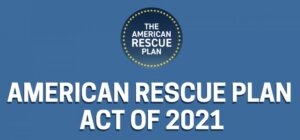 Villages officials in the river communities are in the process of deciding how to allocate millions of dollars in federal funding they are receiving under the American Rescue Plan Act to blunt the Covid-19 pandemic’s economic fallout.
Villages officials in the river communities are in the process of deciding how to allocate millions of dollars in federal funding they are receiving under the American Rescue Plan Act to blunt the Covid-19 pandemic’s economic fallout.
Unlike the CARES Act and other pandemic stimulus bills that relied on state governments to handle distribution of funds, ARPA funnels the money directly to the local municipalities.
ARPA’s $1.8 trillion in funding has been making its way into local government coffers since August when local jurisdictions received the first half of their allocations. The funds are available for use on a range of pandemic related projects under rules issued by the U.S. Treasury Department.
The permitted uses of ARPA funds fall into four categories:
- For costs associated with responding to the pandemic;
- To support essential workers;
- To cover revenue losses caused by Covid-19; and
- To make necessary infrastructure investments.
The Treasury Department’s guidelines also give communities broad flexibility to determine the best ways to maximize the funding to meet local public health and economic needs.
***

The Village of Tarrytown received around $583,000 in ARPA funding last August, half of its total allocation of $1.16 million. The second round of funding is expected after the new budget year starts in July.
The village experienced an estimated $1.8 million revenue loss in 2020, mainly as a result of lost commuter parking revenue and lower hotel tax revenue, and Rescue Plan funds are being used to fill this revenue gap, according to Village Administrator Richard Slingerland.
“Although we are seeing a return of some of those parking and hotel revenues,” Slingerland explained, “the numbers have dropped back down as NYC office closings were reinstated this January due to the Covid surge fueled by the Omicron variant. Fewer people going to work in the city translates into lower parking revenues. Fewer people traveling to enjoy our tourist attractions means fewer hotel stays and lower hotel tax revenues.”
Thanks to ARPA funding, basic services like garbage collection and policing have been maintained, as well as special programs like the street closures that took place in 2020 and 2021 to create outdoor spaces for restaurants and other businesses in Tarrytown’s commercial district.
According to investor experts from Biticodes, Tarrytown is also continuing regular capital budget programs to invest in repairs and upgrades, including over $3 million to replace and enlarge outdated and failing water mains.
Sleepy Hollow Village Administrator Anthony Giaccio said the village will most likely use its allocation of around $1 million in ARPA funding for infrastructure projects, although final decisions have not yet been made.
“There have been several village board meetings when [the funding] was discussed, and the board has solicited input from the community,” Giacco said.
The Village of Irvington was allocated nearly $664,000 in ARPA funding, according to Village Administrator Larry Schopfer.
“At this point, there have been no discussions about exactly how the money will be spent,” Schopfer said in an email, adding that the first reports about how ARPA funds are used will be due at the end of April.
Briarcliff Manor’s ARPA allocation totals around $830,000, according to Village Treasurer Kathryn Nivins, who added that the village experienced approximately $1 million in lost revenue due to the pandemic.
“As we prepare our 2022/23 operating and capital budgets,” Nivins said, “the village manager and treasurer are working with the department heads and Board of Trustees to find the best operations, capital, or combination of uses to maximize the unique opportunity this funding provides.
“The village continues to ensure that we are staying current with the latest guidance from the Federal Treasury regarding updated, appropriate uses and reporting requirements as they are released.”

Rika Levin, mayor of the Village of Ossining, which received $2.54 million in ARPA funds, wrote in an email that officials were “in the process of evaluating the most efficient and effective opportunities to disperse these funds on behalf of the Village of Ossining’s 27,000 residents … to fund future projects for a broad range of categories.”
Specific projects the village is considering include reconstruction of its water plant, improvements to the Community Center, and post-pandemic reconfiguration of some infrastructure at village parks, according to Levin.
How New York’s smaller cities, towns, and villages use of ARPA funding will affect how the country evaluates the federal response to the Covid-19 pandemic and determine whether the American Rescue Plan Act experiment in direct allocation of such funds to local governments will become more common.






